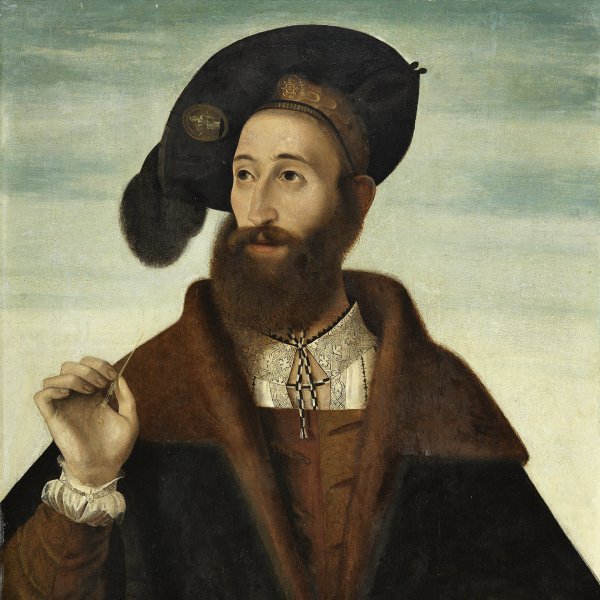Bartolomeo Veneto
This painter was active in the north of Italy during the early decades of the 16th century. His place of origin and early years are difficult to reconstruct and the scant biographical information available is based on the signatures, dates and inscriptions on his works. It is thought that he trained in the workshop of Giovanni Bellini as his early compositions, which are small-format religious works, reveal the marked influence of that master and his followers. Examples from this period include The Virgin and Child of 1502 (private collection, Venice), and The Virgin and Child of 1505 (Bergamo, Accademia Carrara). Bartolomeo Veneto worked between 1505 and 1508 for the court of the d’Este in Ferrara. During this period his painting moved towards a more decorative mode and he began to specialise in portraiture. In 1512 he may have visited Padua but around 1520 he was already in Milan where he achieved great fame and received numerous important commissions. His best known works are half-length portraits of richly and fashionably dressed young men such as the examples in the Palazzo Barberini in Rome and the Fine Arts Museum, Houston. These compositions are notable for the painstaking, detailed manner of painting the draperies and the decorative details of the clothing. In Portrait of Ludovico Martinengo (London, National Gallery) of 1530 it is evident that his late works achieve a greater sense of volume, depth and movement, probably influenced by Titian. Despite this they retain an interest in elaborate materials and a preference for dark red. Documents record the artist’s death in Turin in 1531 and the fact that he lived in that city for some years beforehand.




